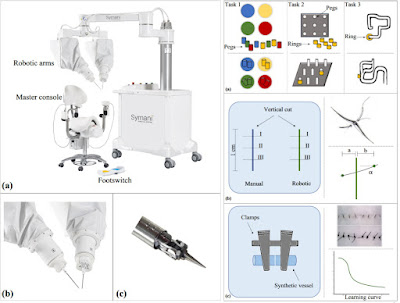Article intro
ABSTRACT
Background. Microsurgery allows complex reconstruc- tion of tissue defects after oncological resections or severe trauma. Performing these procedures may be limited by human tremor, precision, and manual dexterity. A new robot designed specifically for microsurgery with wristed microinstruments and motion scaling may reduce human tremor and thus enhance precision. This randomized con- trolled preclinical trial investigated whether this new robotic system can successfully perform microsurgical needle driving, suturing, and anastomosis.
Methods. Expert microsurgeons and novices completed six needle passage exercises and performed six anasto- moses by hand and six with the new robot. Experienced microsurgeons blindly assessed the quality of the proce- dures. Precision in microneedle driving and stitch placement was assessed by calculating suturing distances and angulation. Performance of microsurgical anastomoses was assessed by time, learning curves, and the Anastomosis Lapse Index score for objective performance assessment.
Results. Refined precision in suturing was achieved with the robot when compared with the manual technique regarding suture distances (p = 0.02) and angulation (p \ 0.01). The time required to perform microsurgical anastomoses was longer with the robot, however, both expert and novice microsurgeons reduced times with practice. The objective evaluation of the anastomoses performed by novices showed better results with the robot.
Conclusions. This study demonstrated the feasibility of performing precise microsutures and anastomoses using a new robotic system. Compared to standard manual tech- niques, robotic procedures were longer in time, but showed greater precision.
Source: Springer



Comments